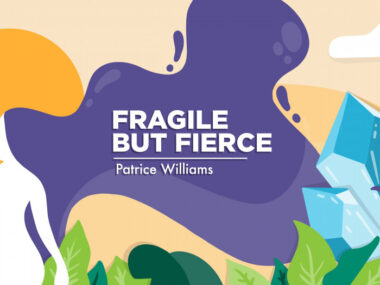An unbreakable sibling bond that surprisingly resulted from EB
Even when skin breaks, love can still be the strongest form of healing
Written by |

When our 5-year-old daughter, whom we lovingly refer to as “Little Star,” was born, the epidermolysis bullosa diagnosis arrived suddenly and immediately reshaped the way we imagined our life together.
In a single moment, all of our certainties dissolved, replaced by a world of wound dressings, needles, creams, and constant attention. Then, a few years later, her little brother arrived, whose nickname is “Teddy Bear.” He was a small whirlwind of energy and curiosity who, instead of overwhelming his sister, wrapped her in an instinctive tenderness, as if he understood from the very beginning that her skin required a special kind of care.
Their relationship is built on invisible balances. Little Star looks at Teddy Bear, who is now 2 years old, with a protective love that rises above her daily pain. Teddy Bear, with the ease of a child, has learned to measure his gestures: He doesn’t squeeze too tightly, he never pushes, and he covers her wounds with kisses. But he also never treats her as if she were made of glass.
Tiny gestures
In our home, the words “careful” and “gently” echo often, but not as limitations. They’ve become part of a language of love. When Teddy Bear hands his sister a toy, he does it with the grace of someone who knows that every touch can be both a gift and a risk.
And yet, within this fragility, there is surprising strength, present in Little Star’s laughter when Teddy Bear makes her giggle; in their whispered secrets exchanged between dressings; and their light-as-a-feather hugs. The small challenges of daily life — getting dressed, playing, and even arguing — become shared acts of resilience.
There are moments when we shield our children, and other moments when their tenderness unexpectedly shields us.
When Little Star falls and gets hurt, Teddy Bear will run to fetch the cream or call for me, his eyes glossy but never panicked. He knows that care is part of our routine and not necessarily an emergency.
When Teddy Bear comes home from school and finds his sister, he brings her a book or convinces her to play. In those moments, I understand that the illness is not the only thread binding them. There is also a deep, wordless complicity composed of tiny gestures.
The two siblings often fall asleep wrapped around each other, held in an embrace that none of us dares to interrupt. Little Star buries her face against her brother’s chest, and Teddy Bear encircles her shoulders with a natural, steady gesture, as if he were born to protect her.
In those moments, when the world quiets and only their intertwined breaths remain, I see the purest form of their bond. There is no fear, no fragility, only love holding them together, even in sleep, as if their bodies already knew what the heart has long understood: They are stronger when they hold on to each other.
Many parents try to teach their children empathy. Every day, I witness how love teaches empathy on its own when it is genuine.
Little Star’s condition has not made Teddy Bear sadder or more afraid, but rather more attentive, sensitive, and human. He has learned that fragility is not a weakness but an invitation to kindness. And she, in turn, feels less alone. She knows that she can rely on him, not only as a brother, but as a companion in life.
In their embrace lies everything I wish for the world: understanding, respect, and a kind of happiness that doesn’t ignore pain but moves through it.
Perhaps this is the quiet miracle that epidermolysis bullosa has left us: the certainty that even when skin breaks, even if a fully resolving therapy doesn’t exist yet, love can still be the strongest form of healing.
Note: Epidermolysis Bullosa News is strictly a news and information website about the disease. It does not provide medical advice, diagnosis, or treatment. This content is not intended to be a substitute for professional medical advice, diagnosis, or treatment. Always seek the advice of your physician or other qualified health provider with any questions you may have regarding a medical condition. Never disregard professional medical advice or delay in seeking it because of something you have read on this website. The opinions expressed in this column are not those of Epidermolysis Bullosa News or its parent company, Bionews, and are intended to spark discussion about issues pertaining to epidermolysis bullosa.






George Eastwood
very good information---thankyou